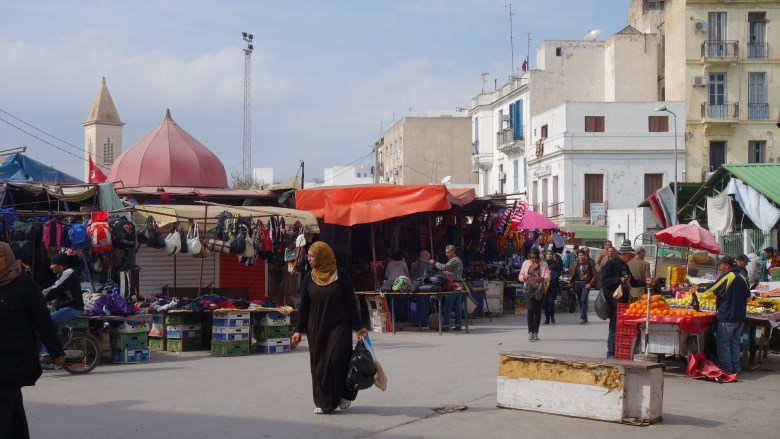The Middle East and North Africa is considered to be the most financially excluded region in the world, where only 21% of adults (about 42 million) have access to an account (excluding the Gulf countries).
Financial inclusion efforts seek to ensure that all households and businesses, regardless of income level, have access to and can effectively use the appropriate financial services. Without access to financial services, people can’t build up assets or manage emergencies, and small businesses can’t access working capital, invest and hire more employees.
Authorities across the region – central banks and ministries of finance – are addressing barriers to financial access, and have begun integrating financial inclusion into ongoing work programs alongside stability and supervisory work.
The just-concluded Financial Education in the Arab World Conference took stock of recent progress and outlined areas for moving forward.
Financial Inclusion: Means to Sustainable Development in MENA
Financial inclusion is an enabler for the Sustainable Development Goals (SDGs), and is critical to achieve decent work and economic growth (SDG #9). It also has a positive impact on GDP growth and formal employment, as documented in an impact study conducted on Al Amana, a leading microfinance institution (MFI) in Morocco. This study found that access to credit led to a 52% increase in the number of days worked outside of the household, and a 10% increase in the in-kind savings and consumption levels.
Also, financial inclusion can help achieve other development outcomes. For example, digital payment and mobile pay-as-you go options provide critical infrastructure to access off-grid solar electrification services.
Coordinating National Approaches to Inclusive Finance
Backed by strong central leadership, dedicated resources and private sector coordination, policymakers have started to scale up investment in data and survey work as well as in financial inclusion strategies.
During the conference, Morocco announced its plan to conduct an update of the 2011 Findex data with a 5,000 sample to establish a robust analytical base for an upcoming financial inclusion strategy. Qatar recently finalized a nationally representative demand-side survey. Palestine, Morocco and Lebanon discussed emerging plans to advance on a strategy, while Jordan just announced the launch of their own strategy, which focuses on small and medium enterprises (SMEs), digital payments and women.
Regional platforms have also grown in importance. The Arab Monetary Fund’s regional Task Force on Financial Inclusion, in place since 2012, has intensified activities in the past year. Its key priorities include scaling up investments in data and survey work, improving national tools for consumer protection, and facilitating policy frameworks developed by the global standard-setting bodies.
An Emerging Focus for Vulnerable Groups
Policymakers are examining ways to promote financial services among vulnerable groups. For example, women, who are less than half as likely as men to have an account, lack access to formal financial services due to structural barriers (including legal restrictions), regulatory hurdles (too rigid know-your-customer requirements) and market issues, including the lack of appropriate products and inaccessible delivery channels. During the conference, the Central Bank of Lebanon presented a policy paper on gender inclusive financial sector development.
NGOs active in the region - including Child & Youth Finance International - also shared financial education programs targeting youth. In MENA, 93% of 15-to-24 year-olds lack an account at a formal financial institution, which is the lowest in the world. Panelists urged integration of financial education programs into school curricula, particularly as financial risks increase and financial products get more sophisticated.
Donors and market facilitators, including GIZ, Accion, and the ILO, presented early findings from financial education programs supporting refugees and others affected by humanitarian crises.
Programs that focus on socio-economic integration of affected communities through financial literacy training and promote access to financial services, particularly payments services, savings and insurance products can reduce vulnerability.
Technology
Digital financial services are growing across the region. Mobile network operators (MNOs) have partnered with banks to offer transfers, payments and, in certain cases, credit provision services. According to Central Bank data, 3.8 million mobile wallets were used in Egypt to conduct 6.7 million transactions in 2015. Recent regulatory amendments in Morocco and Jordan have allowed non-bank payment service companies to operate. Regulators in Morocco, Egypt, and Jordan are working on improving the quality, efficiency, and interoperability of digital switches.
Key challenges moving forward for digital finance include adapting regulatory regimes to support appropriate oversight, technical cooperation of diverse market actors (telcos, lending and payment institutions, and agents), and promoting the entrance of non-bank providers into the market.
Looking Ahead
In his closing remarks, Philippe de Meneval, Program Leader, Equitable Growth, Finance and Institutions, synthesized priority areas for moving forward:
- Give more attention to evidence-based evaluations, including digital platforms and programming informed by behavioral finance literature. To date, there has been no rigorous evaluation of financial education programming in the region.
- Back up national strategies by well-targeted programs to scale up financial capability efforts, particularly for vulnerable groups including women.
- Tailor programming to specific country contexts. For example, create a wide-scale literacy campaign to introduce basic financial services, including understanding minimum know-your-customer (KYC) requirements, in the poorest countries. The Gulf and more advanced economies may focus on promoting financial technology or managing de-risking of correspondent banking relationships.
- Invest more in improving consumer protection mechanisms, particularly for emerging products and business models, including mobile wallets, digital credit, and peer-to-peer payment platforms.
- Review financial inclusion programs in light of existing subsidy schemes, specifically those managed by public authorities for access to credit for SMEs, as well as warehouse receipt and value chain financing mechanisms.

